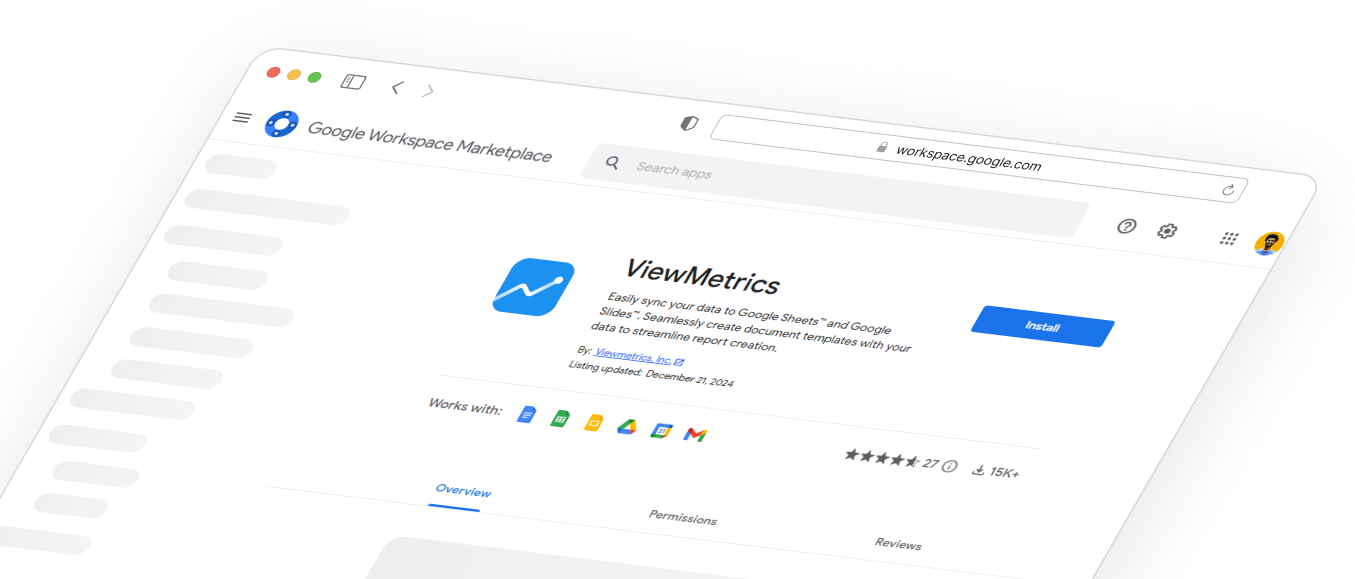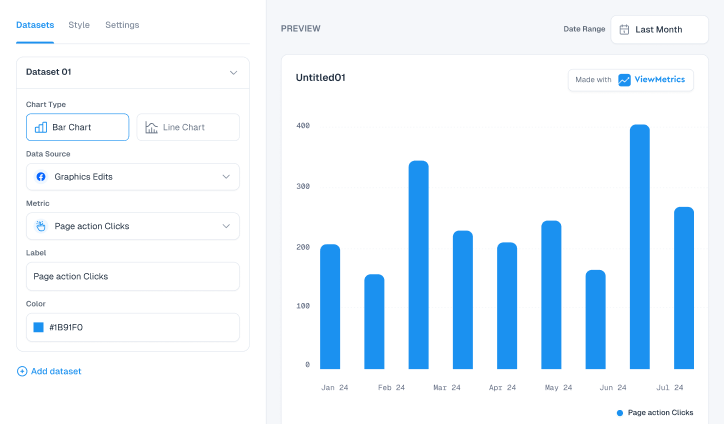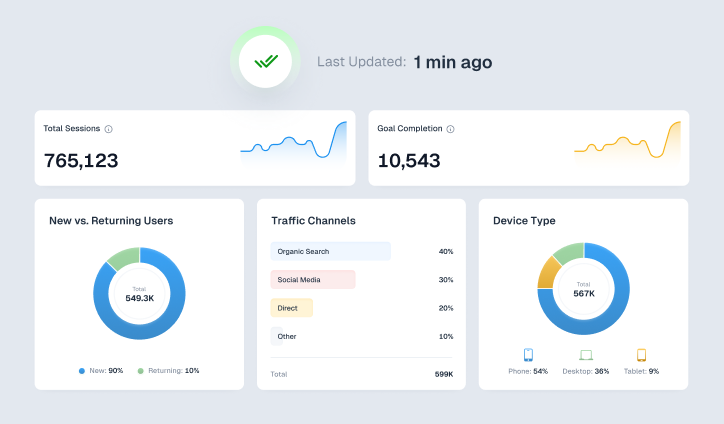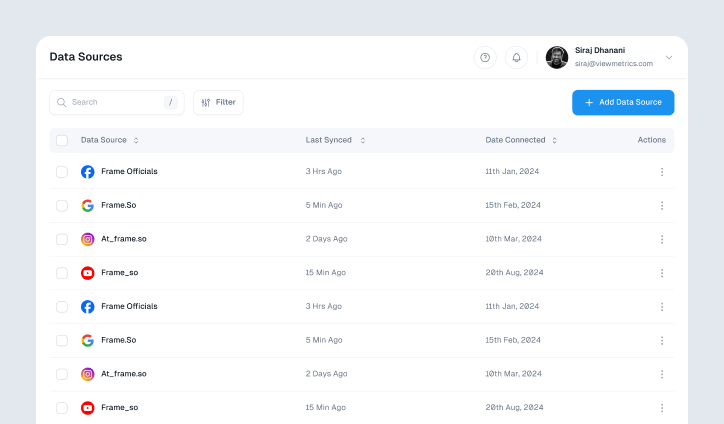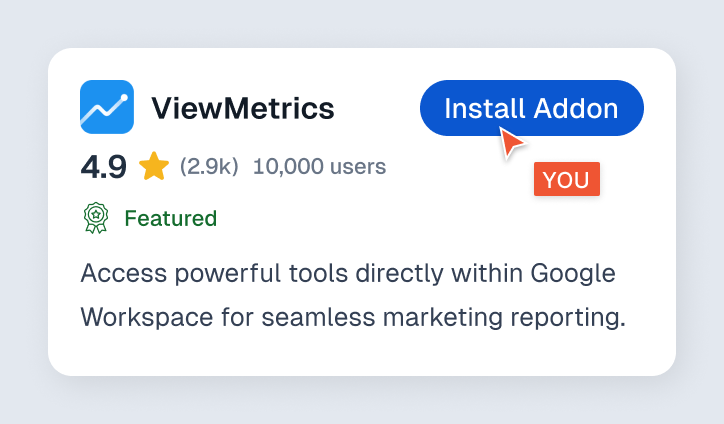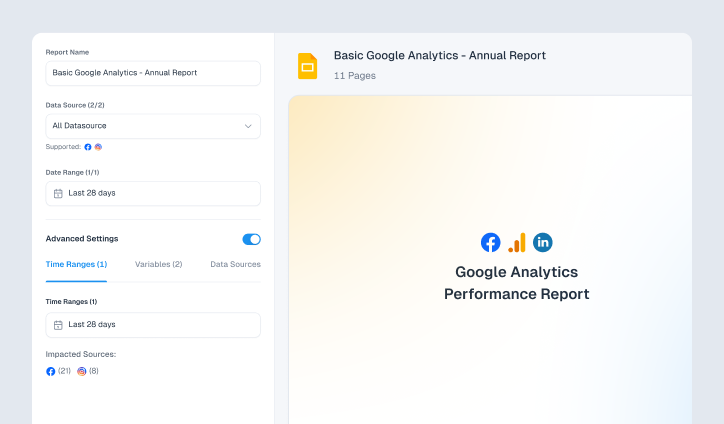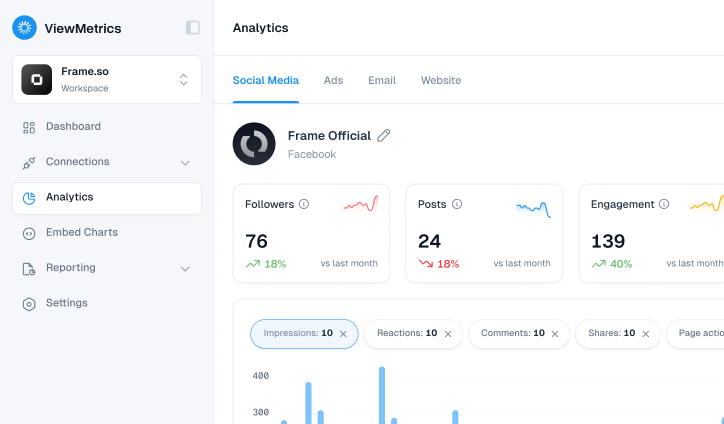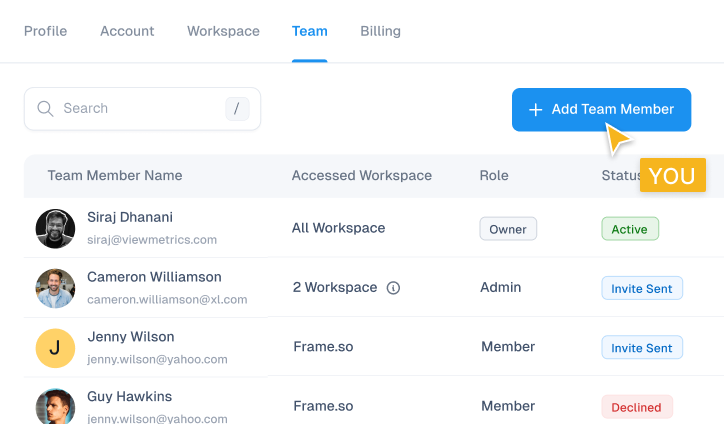Summary for the Blog
- Mid-funnel (MoFu) marketing is the stage between lead awareness and their final decision to purchase. Its purpose is to nurture leads who are already interested, building trust and providing value to guide them toward a purchase.
- Key MoFu tactics include hosting webinars and live streams, providing product demonstrations, using targeted email marketing, and sharing case studies and testimonials. The goal is to establish expertise and provide social proof.
- To measure success, it is important to track relevant Key Performance Indicators (KPIs) such as delivery rate, open rate, and click-through rate for email campaigns.
- Common mistakes to avoid are being too focused on sales, ignoring the audience’s specific needs, and neglecting to measure content performance.
Picture this: You walk into a store to buy a new phone. The salesperson greets you warmly and points out the latest models (top-level marketing). Then, they show you phones that match your preferences, answer your questions, and discuss features that matter most to you (mid-level marketing). Finally, when you’re convinced, they guide you to the billing counter to close the deal (bottom-level marketing).
In marketing terms, this is how a buyer’s journey typically unfolds. The top-level focuses on grabbing attention and building awareness, the middle is all about engaging potential customers and helping them decide, while the bottom is where the purchase happens. While each stage plays its part, the middle funnel often determines whether someone moves closer to buying—or loses interest altogether.
This guide focuses on mid-funnel marketing and why it’s such an important step in the process. Whether you’re an experienced marketer or just refining your approach, you’ll learn simple ways to make this stage more impactful. Without waiting further, let’s get started.
What is Mid-Funnel Marketing?
Let’s break it down. Selling a SaaS product isn’t a one-step process—it involves guiding potential customers through a journey called the SaaS sales funnel.

Here’s how it works:
- Top of the Funnel (ToFu): This is where it all starts. Your focus here is on getting your product noticed and bringing in leads. You might do this through social media posts, blog articles, ads, cold outreach, or other methods. The people who show interest or interact with your brand at this stage become your leads.
- Bottom of the Funnel (BoFu): This is where the magic happens. By now, you’re talking to leads who are seriously considering your product. You’re negotiating, answering their final questions, and closing the deal.
But here’s the real question: How do you take someone from mildly interested to ready to buy? That’s where mid-funnel marketing comes into play.
Middle-of-the-funnel (MoFu) marketing is the bridge between awareness and decision-making. This stage is all about nurturing leads and helping them move closer to becoming paying customers. It involves building trust, sharing value, and ensuring your potential customers feel confident in your product.
At this stage, your leads already know you exist. Now, your job is to give them reasons to stick around and consider your product seriously. Here’s how mid-funnel marketing works:
- Understanding Your Leads: Every lead is different. Some are still figuring out their options, while others know exactly what they’re looking for. Mid-funnel marketing helps you identify where your leads are in their journey and what exactly they need from you.
- Sharing Useful Resources: This is the time to provide things like case studies, webinars, or product demos. These resources help your leads understand how your product solves their problems, giving them the information they need to make a well-informed decision.
- Building Relationships: A little personal attention can go a long way. Reach out to your leads, answer their questions, and show them you genuinely care about helping them succeed. This is how you build trust and keep them moving through the funnel.
Without mid-funnel strategies, leads can easily lose interest or go to a competitor. This phase keeps the momentum going by showing potential customers that your product isn’t just an option—it’s the solution they’ve been looking for.
Also Read: Full-Funnel Marketing
View All Your Marketing and Website Data — Instantly
Connect Instagram, Mailchimp, Google Analytics & more
Pre-built dashboards, no setup needed
Save hours on reporting every week
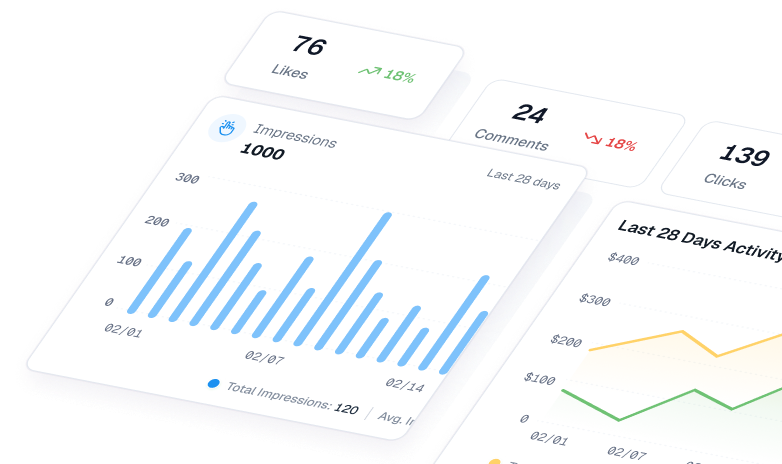
Why is Mid-Funnel Marketing Crucial?
When it comes to marketing, most businesses tend to focus heavily on the top and bottom of the funnel—attracting new leads and closing sales. But what about the middle? That’s where things can go wrong if not given enough attention.
Think of it like building a house. You wouldn’t just spend time on the foundation and the final details and skip over the walls, plumbing, and wiring in between. Without those middle parts, the house wouldn’t stand strong or be comfortable to live in. The same goes for marketing. If you only focus on getting leads and sealing the deal, without nurturing those leads in the middle of the funnel, you’re missing a critical piece of the puzzle.
Middle-funnel marketing is all about keeping those leads warm, building relationships, and guiding them through the decision-making process. If neglected, you risk losing their interest—and even worse, they might end up going to a competitor who pays more attention to their needs.
So, while it’s tempting to zoom in on getting new customers or pushing for a sale, don’t forget the importance of nurturing those leads in the middle. It’s what keeps them engaged and eventually converts them into loyal customers. Ignoring it is like skipping a step in the process—leaving you with gaps that can hurt your long-term success.
Mid-Funnel Marketing Tactics
When you’re trying to turn leads into customers, mid-funnel marketing is all about building trust and providing value. At this stage, potential customers are already aware of your product or service, and it’s time to nurture that interest further. Here are some tactics that can help you do just that.

-
Webinars and Live Streams
Webinars and live streams are fantastic ways to engage your audience directly. They allow you to showcase your expertise, demonstrate how your product or service works, and answer any burning questions your potential customers might have. These events create a sense of connection and provide an opportunity for real-time interaction, which builds trust and encourages leads to move closer to making a purchase.
In addition, you can also create content from these sessions that can be repurposed into blogs, videos, or downloadable resources to keep engaging with your leads long after the event ends.
Example: Pipedrive, a CRM software company, uses webinars as a way to connect with potential customers. They cover topics related to sales strategies and CRM best practices, offering valuable insights while showcasing how their product can solve specific problems. You can check out their webinars here.
By hosting your own webinars or live streams, you can establish your brand as a trusted source of information, which helps to push leads further down the sales funnel.
-
Product Demonstrations
Product demonstrations are a great way to show your audience exactly how your product works in real life. It’s one thing to talk about features, but it’s another to let potential customers see it in action. A well-done demo can highlight your product’s value, answer questions, and help prospects visualize how it could solve their problems. This builds confidence and gives them the final push toward a purchase.
Example: Groundswell offers a clear and easy-to-follow product demo, showcasing how their platform helps businesses with customer engagement. By requesting a demo on their website, prospects can see firsthand how the product works and how it can benefit them. You can check it out here.
Product demos allow leads to experience your offering in a real, tangible way, making it easier for them to move forward in their decision-making process.
-
Email Marketing
Email marketing remains one of the most reliable and personalized ways to engage with leads at this stage of the funnel. With email, you can send targeted content directly to potential customers, offering them value and nudging them closer to a decision. Whether it’s offering product updates, special promotions, or helpful content, email marketing allows you to stay on their radar and build a relationship over time.
Example: HubSpot uses email marketing to nurture its leads by sending out valuable content that addresses the pain points of their audience. From case studies to product tutorials, they make sure their emails are informative and helpful. HubSpot’s emails help educate their potential customers, so when it’s time to make a purchase, they’re already well-informed. You can see examples of their approach on their site.
Also read: Email Marketing Tips
-
Implement Case Studies or Testimonials
Sharing real stories of how your product or service has made a difference can be a game-changer. Case studies and testimonials provide social proof, showing potential customers that others like them have found value in what you offer. These success stories build trust and credibility, which can be the push they need to take the next step.
Example: Copyhouse, a content marketing agency, uses case studies to showcase how their work has helped businesses grow. Their case studies dive into the challenges clients faced and how Copyhouse’s solutions delivered results. You can explore their case studies here.
By using case studies or testimonials, you allow your prospects to see the real-world impact of your product, helping them feel more confident in their decision.
-
Invest in Quality Content
Great content goes a long way in capturing the attention of your audience and keeping them engaged. By offering valuable, informative, and entertaining content, you can keep prospects interested in what you have to say, helping them move closer to making a purchase. Quizzes, blogs, eBooks, and infographics all work well to keep your audience engaged.
Example: KlientBoost, a paid advertising agency, offers quirky and fun quizzes that help businesses understand their marketing needs. These quizzes not only provide value to potential customers but also give KlientBoost the chance to showcase their expertise in marketing. You can check out their quizzes here.
By consistently delivering useful and entertaining content, you can build trust and nurture your leads, making it easier for them to take the next step in their decision-making process.
Also read: Content Marketing Analytics: Key to Know Your Audience
-
Perform Competitor Comparisons
Competitor comparisons give your leads an easy way to see how your product or service stacks up against the competition. When done right, these comparisons can highlight your unique selling points and help leads understand why they should choose your brand over others. It’s an effective way to address any concerns they may have about your product’s value, features, or pricing.
Example: Podia, an online course platform, provides an in-depth comparison of their platform with others in the industry. This transparent approach allows leads to see exactly how Podia differs from its competitors, making it easier for potential customers to make an informed decision. You can view their comparison here.
By clearly outlining the benefits of your product over others, you can help leads feel more confident about choosing your solution.
How to Measure the Success of Your Mid-Funnel Marketing Efforts?
Measuring the success of your mid-funnel marketing efforts starts with tracking the right KPIs (Key Performance Indicators). These are the numbers that show how well your campaigns are doing and where you might need to adjust. The KPIs you focus on can change depending on the tactics you’re using.
For instance, if you’re running email marketing campaigns, some useful KPIs to track include delivery rate, open rate, click-through rate, bounce rate, and unsubscribe rate. These stats give you a clear picture of how your emails are performing. You can learn more about tracking email marketing performance in our blog on email marketing KPIs.
To keep things organized, using analytical reporting can help you keep tabs on these KPIs over time. With the right tools, you can see how your marketing efforts are working and where improvements might be needed.
That’s where ViewMetrics comes in. We make it easier to track your mid-funnel marketing progress by pulling data from all your marketing platforms into one convenient dashboard. This way, you can view all your important metrics in one place.
Ready to get started? Try ViewMetrics for free and see how easy it is to stay on top of your mid-funnel marketing performance.
View All Your Marketing and Website Data — Instantly
Connect Instagram, Mailchimp, Google Analytics & more
Pre-built dashboards, no setup needed
Save hours on reporting every week
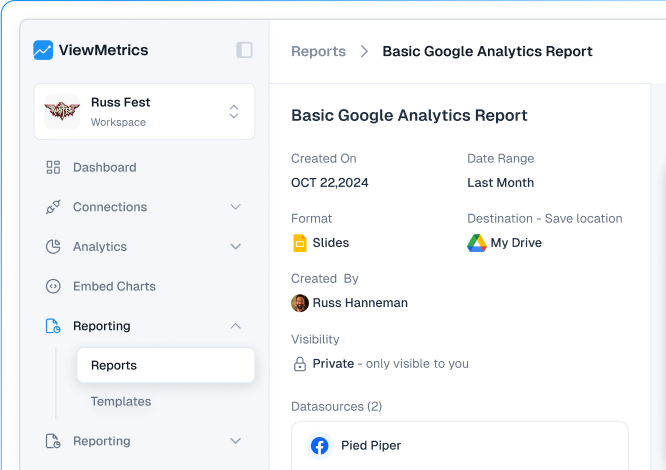
Closing Thoughts
To wrap things up, mid-funnel marketing is all about keeping your leads engaged and building trust as they get closer to making a decision. By using tactics like webinars, product demos, and targeted emails, you can offer valuable information that helps them along the way. This part of the process is important—if you skip it, you could lose out on potential sales. So, take the time to nurture your leads and make sure they feel confident in their decision. With tools like ViewMetrics, tracking your progress becomes simple and helps keep you on the right track.
Frequently Asked Questions About Mid-Funnel Marketing
What should I avoid when creating MoFu content?
To make your middle-of-the-funnel content work for you, stay clear of these common mistakes:
- Overloading with sales pitches: MoFu content is all about building trust and offering helpful info, not pushing a hard sale. Keep it informative and engaging.
- Ignoring your audience: Tailor your content to fit the specific interests and needs of the people you’re trying to reach. Don’t make it too broad.
- Not measuring performance: Track how well your content is doing and tweak it where needed. It’s all about making sure it stays relevant and helpful.
How often should MoFu content be published?
How often you post MoFu content really depends on how your audience consumes it. Try to keep a steady rhythm, enough to keep your brand on their minds without bombarding them. Whether that’s once a week, every other week, or once a month, make it work with what you can consistently handle.
What’s the best way to keep leads engaged during the MoFu stage?
To keep things moving in the MoFu stage, focus on providing content that speaks to your audience’s interests. Keep the conversation going with regular updates, address their pain points, and show them why your solution is the one they need. Keep it personal and relevant to them.





